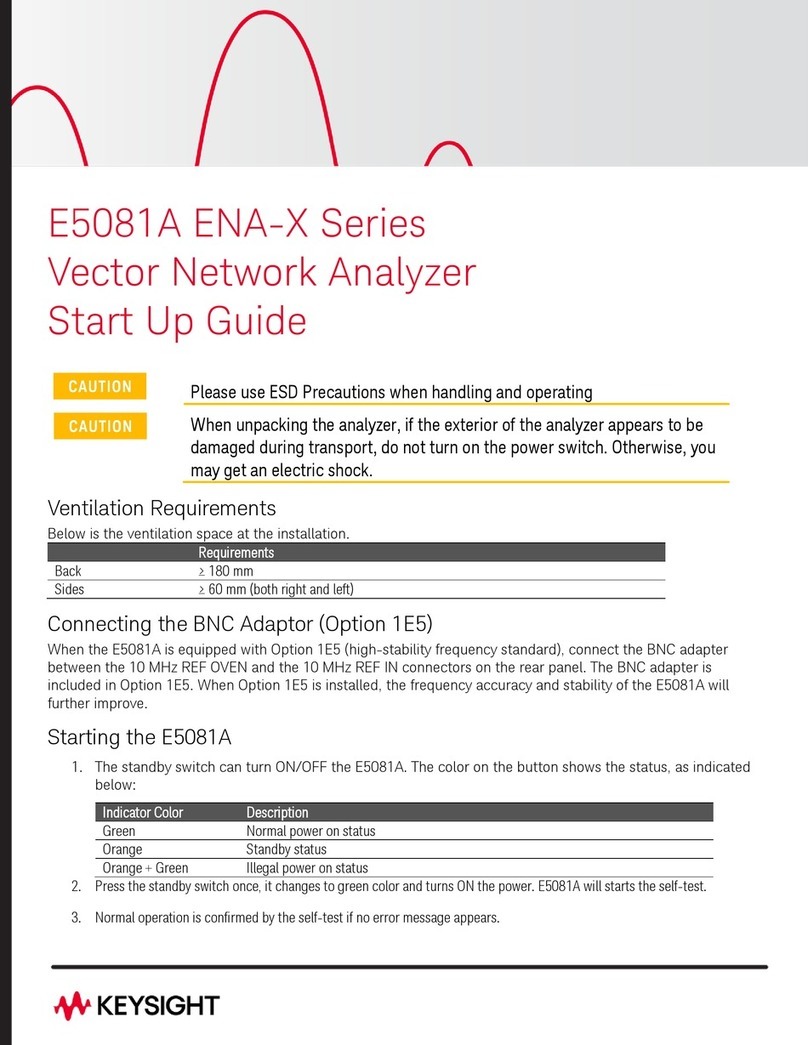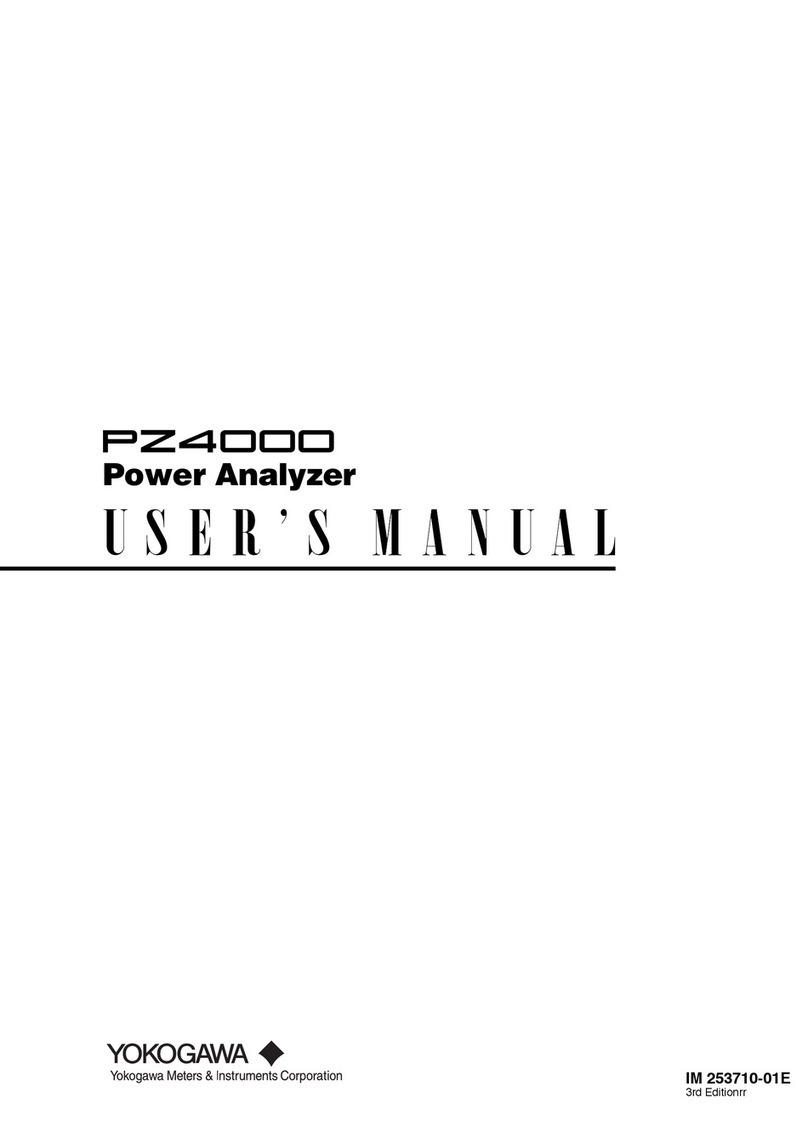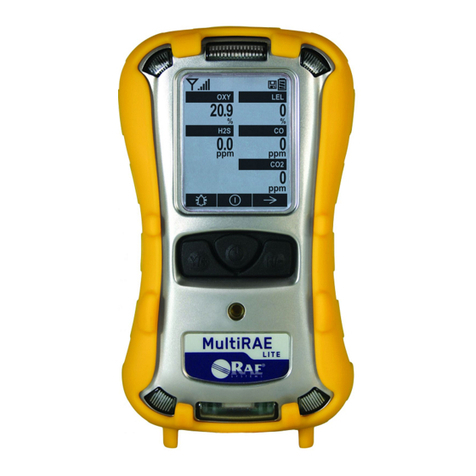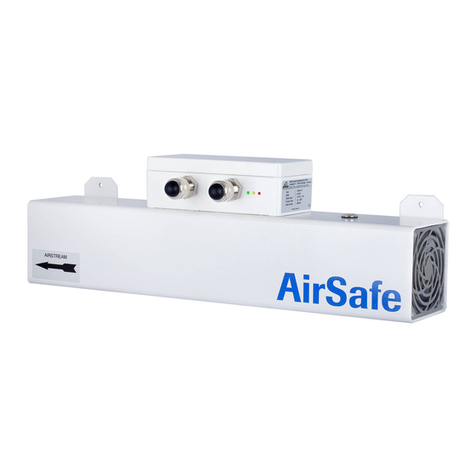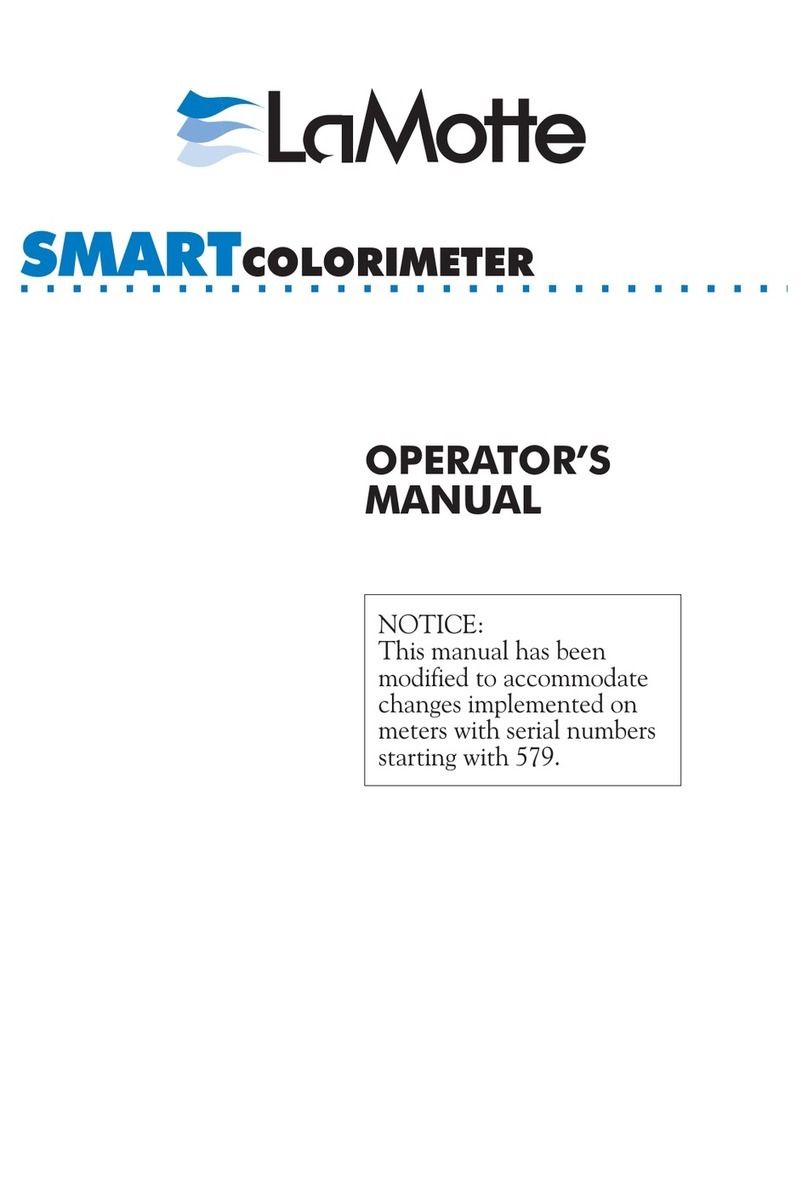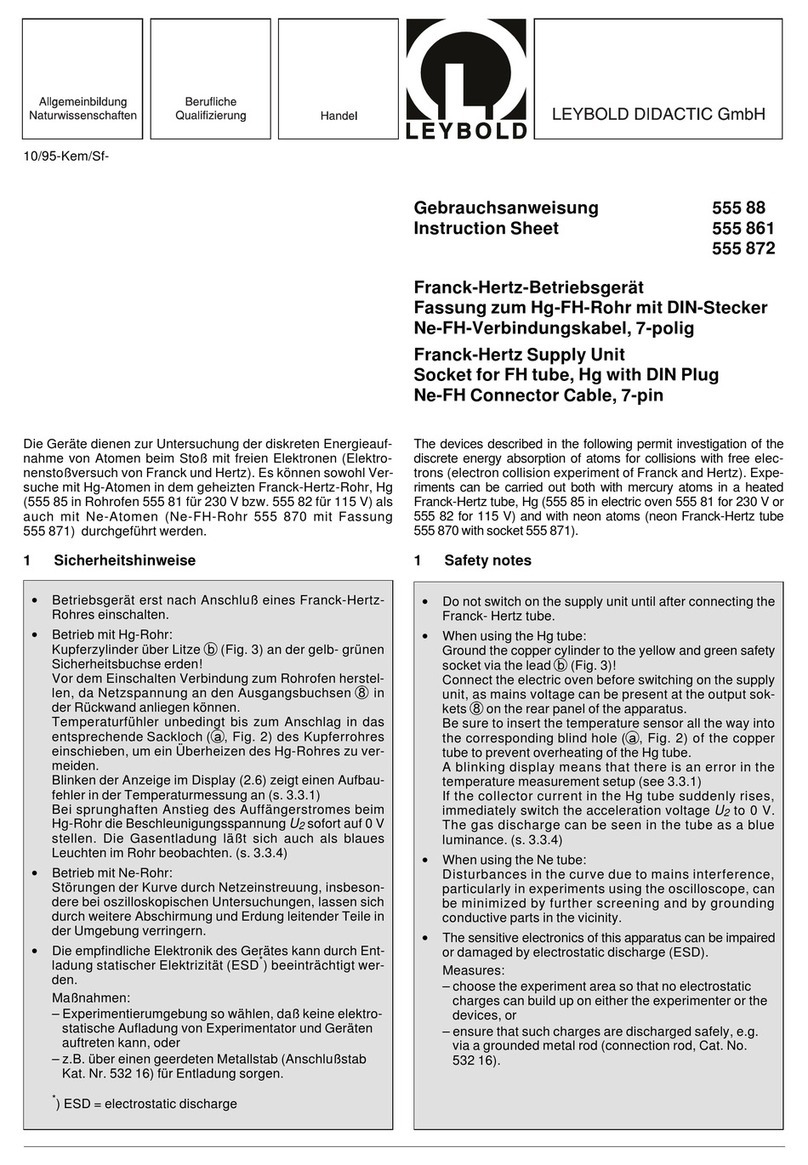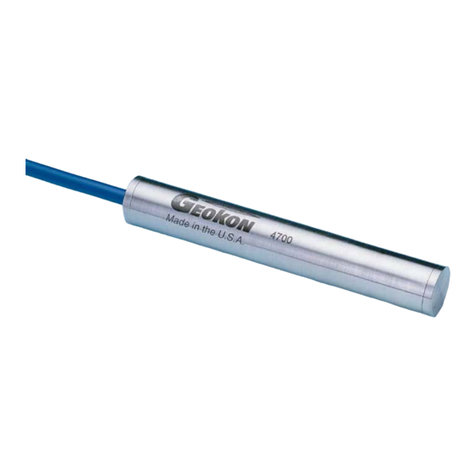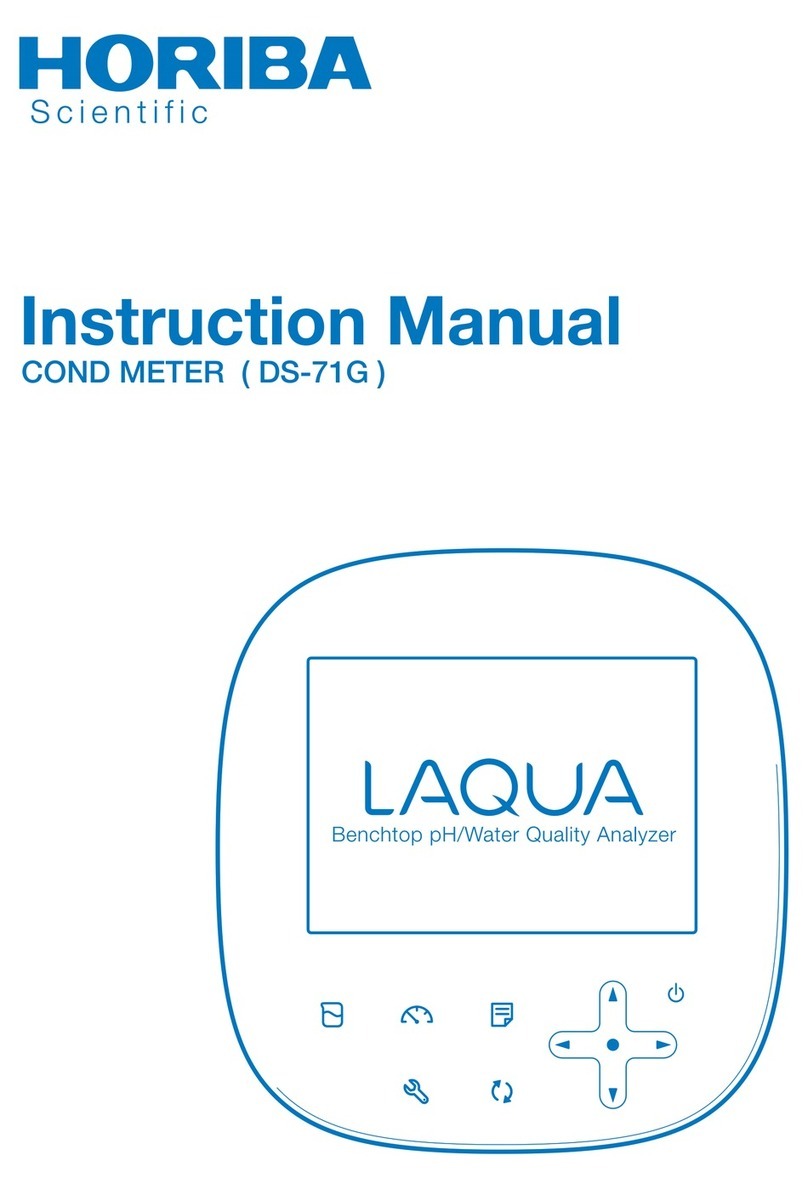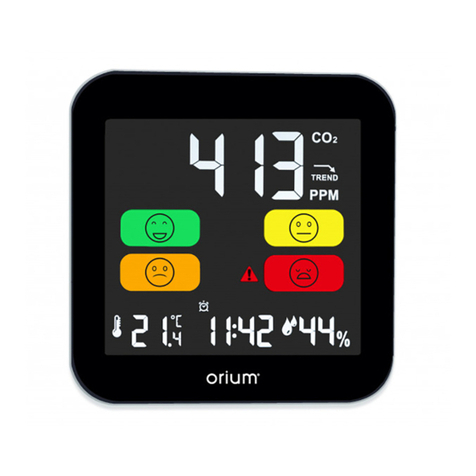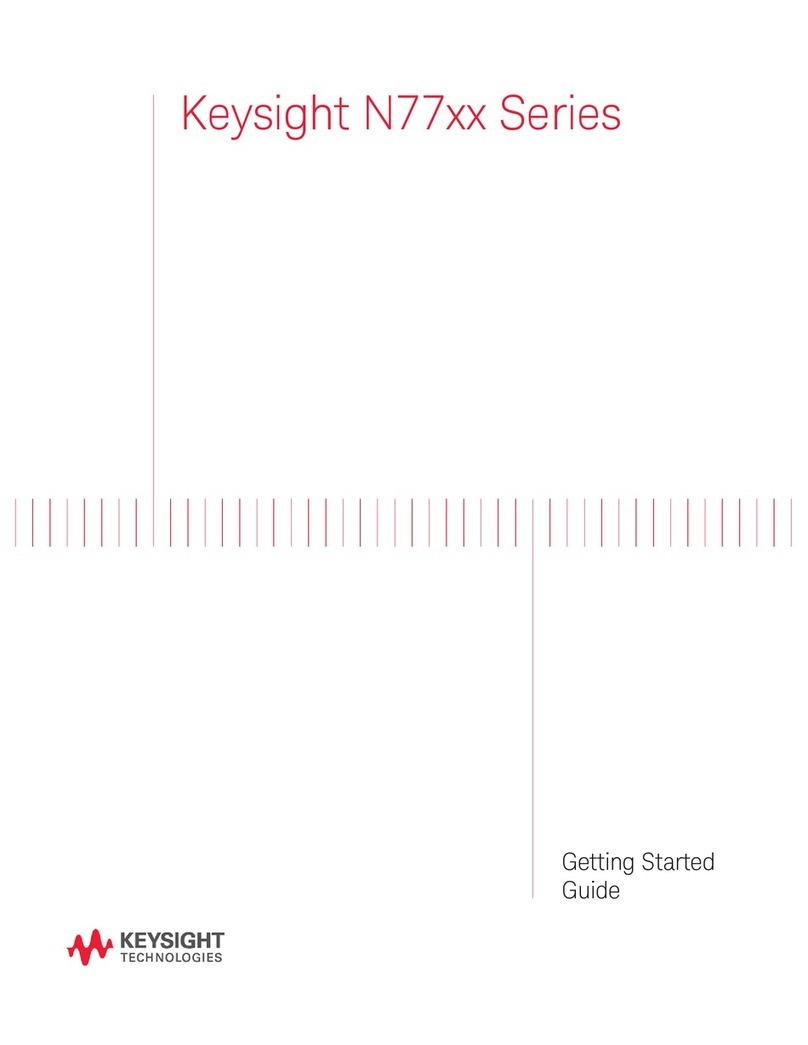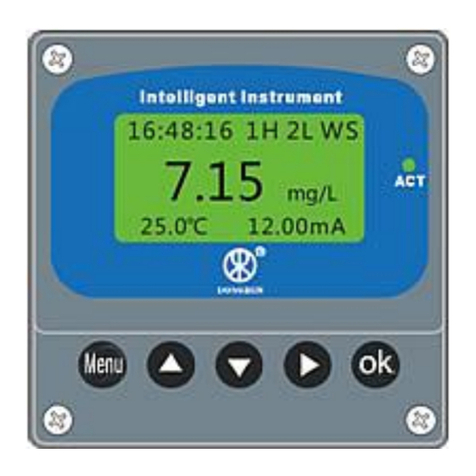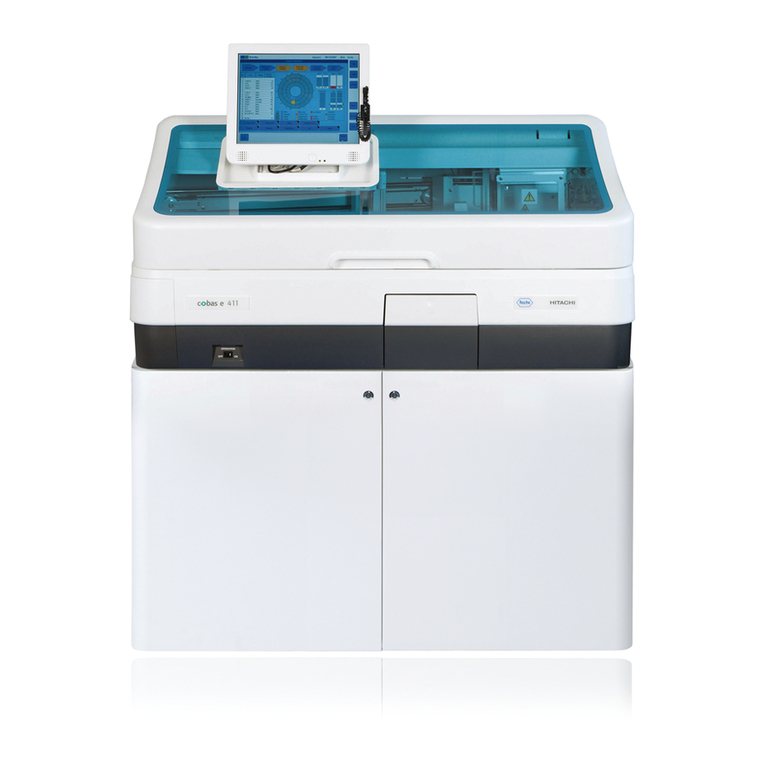GasTech Millenium Hydrocarbon Manual

MilleniumMillenium Hydrocarbon
Gas Detector
Instruction and Operation Manual
GasTech Australia Pty Ltd
106 Westpoint Center
396 Scarborough Beach Rd Osborne Park
61 8 9242 1869 Fax 61 8 9242 1959
Version 092501
A
U
S
T
R
A
L
I
A
P
T
Y
L
T
D

GasTech Australia
GasTech Australia Pty Ltd (GTA) designs and manufactures innovative fixed system gas detection
equipment, for combustible gases, oxygen, carbon dioxide and toxic gases.
Commitment
Our quality and service are uncompromising. We back each of our products with a two-year warranty on all
materials and workmanship. We offer technical support, user training and on-site service and maintenance
of equipment to meet the needs of our customers.
Gas Detection Service
Individually designed maintenance packages are available for specific customer needs. Service begins with
verification of the system installation that includes an initial system check and calibration. We then offer
customer training programs (on-site and at factory) to insure that technical personnel fully understand
operation and maintenance procedures. When on-the-spot assistance is required, service representatives
are available to handle any questions or problems immediately.
Warranty
GasTech Australia Pty Ltd (GTA) warrants products manufactured by GTA to be free from defects in
workmanship and materials for a period of two (2) years from date of shipment from the factory. Any parts
returned freight pre-paid to the factory and found defective within the warranty would be repaired or
replaced, at GTA's option. GTA will return repaired or replaced equipment pre-paid lowest cost freight. This
warranty does not apply to items, which by their nature are subject to deterioration or consumption in normal
service. Such items may include:
Fuses and Batteries.
Warranty is voided by abuse including rough handling, mechanical damage, alteration or repair. This
warranty covers the full extent of GTA liability and GTA is not responsible for removal, replacement costs,
local repair costs, transportation costs or contingent expenses incurred without prior written approval.
Sensor Electronics Corporation's obligation under this warranty shall be limited to repair or replacement of
any product that has been returned to Sensor Electronics Corporation for warranty consideration. This
warranty is expressly in lieu of any and all other warranties expressed or implied, and all other obligations or
liabilities on the part of Sensor Electronics Corporation including but not limited to, the fitness for a particular
purpose. In no event shall Sensor Electronics Corporation be liable for direct, incidental, or consequential
loss or damage of any kind connected with the use of it's products or failure to function or operate properly.
Year 2000 Compliance
All Sensor Electronics products have been tested and are certified by GasTEch Australia to accurately
process date/time and date/time related data from, into and between the 20th and 21st centuries. GasTech
Australia products neither contain nor create any logical or mathematical inconsistency, will not
malfunction, and will not cease to function when processing date/time data.
Please contact GasTech Australia for further information.

Table of Contents
I. SPECIFICATIONS
II. GENERAL DESCRIPTION
III. OPERATION
Installation and Startup
IV. CALIBRATION
V. MAINTENANCE
VI. PARTS LIST
VII. DRAWING SECTION

3
I. SPECIFICATIONS
Model:
MILLENIUM Infrared Hydrocarbon Gas Detector
Available gases:
Methane Hexane Isobutane
Ethane Octane Ethanol
Ethylene Benzene Methanol
Ethylene Oxide Ethyl Benzene 1-Butene
Propane Toluene Cyclohexanone
Propylene Xylene Cyclohexanol
n-Butane Heptane DimethylPropane
Please note that this list is not all-inclusive. The MILLENIUM can be calibrated for most
hydrocarbons, provided a calibration gas is available.
Part Number: 142-0280
Detection Method:
Diffusion
Optional sample draw (requires a minimum of 1 liter per minute flow rate)
Output (analog):
4-20 mA (Source type), max. 1000 Ohm load at 24 VDC supply voltage
Response Time:
T50 < 5 seconds
T90 < 10 seconds
Construction:
Sensor housing is nickel-plated aluminum and stainless steel.
Optional stainless steel model available.
Class 1, Division 1, Groups B, C and D
Ingress rating: IP54
Accuracy:
+/-3% LFL, 0 to 50% LFL (Lower Flammable Limit)
+/-5% LFL, 51 to 100% LFL
Operating Temperature Rating:
-40°to +70°C at 0 to 99% RH (non-condensing)
Operating Voltage:
24 VDC Operating range: 18 to 32 VDC measured at the detector head
Power Consumption: 5 Watts Max.
Max. Current Draw: (at 24 VDC)
Average: 210 mA
Peak: 400 mA
Approvals: CSA and FM, For -40C to +50C operation, Performance Tested
Installation Category: Cat. I, Pollution Degree 2

4
II GENERAL DESCRIPTION
CONVENTIONS
The following conventions are used in this manual.
Warning Statement
VDC (DC Voltage)
MILLENIUM
The MILLENIUM Infrared gas detector is a microprocessor based intelligent gas detector that
continuously monitors combustible hydrocarbon gases and vapors within the Lower Flammable Limit (LFL).
The MILLENIUM is ideally suited for use in harsh environments and where the cost of required
maintenance for conventional catalytic detectors is prohibitive. The MILLENIUM Infrared gas detector
will perform reliably in the presence of silicone and other catalytic poisoning agents and can also operate in
oxygen free environments or where high background gas levels are present. There are no known poisons
that affect this technology.
The MILLENIUM is a stand-alone device providing a continuos 4 to 20 mA output.
Features
•Requires no routine calibration to ensure proper operation.
•Continuous self-test automatically indicates a fault, with fail to safe operation.
•A multi-layered filtering system protects optics from dirt and water ingress.
•Straight optical path eliminates the need for mirrors or reflective surfaces, such as mirrors or beam
splitters.
•Performs well in the presence of high concentrations or constant background levels of hydrocarbons and
in oxygen depleted atmospheres.
•Highly resistant to poisoning and etching.
•Standard 4 to 20 mA output (current source)
•Explosion proof housing designed for harsh environments.
•Smart Calibration AutoACcircuit.
Infrared Detection Technology
The MILLENIUM Infrared gas detector uses infrared absorption technology for detecting combustible
hydrocarbon gases. Gases absorb infrared light only at certain wavelengths. The concentration of a gas
can be measured by the difference of two channels (wavelengths), a reference and a measurement
channel. The MILLENIUM uses a collimated infrared light source that passes through a waveguide, at
the end of the waveguide is a dual channel receiver. The dual channel receiver measures the intensity of
two specific wavelengths, one at an absorption wavelength and another outside of the absorption
wavelength. The gas concentration is determined by a comparison of these two values.
!

5
Infrared Absorption Spectrum for Methane
The dual channel receiver is a single wafer, double filtered, dual receiver with an internal optical barrier.
The elements are perfectly matched resulting in overall stability and superior performance throughout the
entire temperature range.
Using a dual channel receiver there is no need to use any special lenses or beam splitters to achieve the
different measurement bands.
The MILLENIUM utilizes a unique patent pending feature, the AutoACcircuit. The AutoACcircuit is
an automatic analog control circuit, which allows the MILLENIUM to be calibrated for any combustible
hydrocarbon, provided that a calibration quality level of the gas is available. This eliminates setting
dipswitches or changing out sensors for different types of hydrocarbons, simply calibrate the unit with a
calibration gas of the specific gas to be detected.
The optics can be easily disassembled for cleaning. This does not require powering the unit down and does
not compromise the units’ explosion proof rating. The device will self compensate for dirty optics until a
point in which the optical surfaces are completely obscured.
There are no consumable components contained in this product.
Transmittance
Wavelength
100%
0%
Absorption
Band
Reference
Band
Dual Channel
Receiver Infrared Light
Source
Waveguide
Window
Window
Waveguide
Collar
Wiring
Connections
Hydrophobic Filter

6
III. OPERATION
Installation and Startup
Warning: The user shall be made aware that if the equipment is used in a manner not specified by the
manufacturer, the protection provided by the equipment may be impaired.
The first step in the installation process is to establish a mounting location for the MILLENIUM. Select a
location that is typical of the atmosphere to be monitored or close to the anticipated source of a dangerous
gas.
It is very important that the MILLENIUM be properly located to enable it to provide maximum
protection. The most effective number and placement of sensors vary depending on the conditions of the
application. When determining where to locate sensors the following factors should be considered.
•What are the characteristics of the gas that is to be detected? Is it lighter or heavier than air? If it is
lighter than air the sensor should be placed above the potential gas leak. Place the sensor close to the
floor for gases that are heavier than air or for vapors resulting from flammable liquid spills. Note that air
currents can cause a gas that is heavier than air to rise. In addition, if the temperature of the gas is
hotter than ambient air or mixed with gases that are lighter than air, it could also rise.
•How rapidly will the gas diffuse into the ambient air? Select a location for the sensor that is close to the
anticipated source of a gas leak.
•Wind or ventilation characteristics of the immediate area must also be considered. Movement of air may
cause gas to accumulate more heavily in one area than in another. The detector should be placed in the
areas where the most concentrated accumulation of gas is anticipated. For outdoor applications with
strong wind conditions, it may require the sensors to be mounted closer together and on the down wind
side, to the anticipated area of a gas leak. Also take into consideration for indoor applications, the fact
that many ventilation systems do not operate continuously.
•The sensor should be accessible for maintenance.
•Excessive heat or vibration can cause premature failure of any electronic device and should be avoided
if possible.
•Follow all national and local installation codes and practices.
The MILLENIUM has a ¾” NPT threaded connector for mounting the detector to a junction box.
A user-supplied junction box can be used providing it has the appropriate sized NPT conduit entries. The
junction box must be suitable for use in the application and location in which it is being installed. After the
device has been installed, a calibration is required. Refer to the Calibration section of this manual.
Wiring connections
Red wire: 18 to 32 VDC
Black wire: DC Common
Blue wire: 4 to 20 mA output
White wire: Smart Calibration Wire (data wire)
Earth Ground: Male 10-32 Stud on SEC Millenium cap, see figure 1.
Wire sizing:
0 to 500 feet, recommended wire gauge size 16 AWG
501 to 1000 feet, recommended wire gauge size 14 AWG
Shielded cable is recommended. Wiring should be installed in medal conduit with no other cabling in the
same conduit.
!

7
Warm-up
When power is applied to the detector, it enters a one (1) minute warm-up mode. The output current will be
0.8 mA during the warm up time period. At the end of the warm-up period with no faults present, the
detector automatically enters the normal operating mode (4 mA). If a fault is present after warm-up, the
detector current output will indicate a fault. See the following chart for fault code status.
Normal
In the normal operating mode, the 4 to 20 mA signal levels correspond to the detected gas concentration.
The detector continuously checks for system faults or initiation of calibration and automatically changes to
the appropriate mode.
The 4 to 20 mA output of the MILLENIUM is a non-isolated current source.
Current Output and Corresponding Status
Once the fault is cleared the MILLENIUM will atomatically resume normal operation.
Current Output Status.
0-20 mA Normal measuring mode
0.0 mA Unit Fault
0.2 mA Reference channel fault
0.4 mA Analytical channel fault
0.8 mA Unit warm up
1.0 mA Optics fault
1.2 mA Zero drift fault
1.6 mA Calibration fault
2.0 mA Unit spanning
2.2 mA Unit zeroing
4.0 mA Zero gas level (0%LEL)
5.6 mA (10%LEL)
8.0 mA (25%LEL)
12 mA (50%LEL)
16 mA (75%LEL)
20 mA Full scale (100% LEL)
20.1-23 mA Over-range (> 100% LEL)

8
IV. CALIBRATION
SEC MILLENIUM
The MILLENIUM is factory calibrated zeroed and spanned. Unlike catalytic sensors it does not require
routine span gas calibration to ensure proper operation.
The MILLENIUM can be calibrated for almost any hydrocarbon using a calibration gas of the
hydrocarbon that is to be detected (target gas). The MILLENIUM is required to be spanned with gas
only one time with the target gas. Typically this is done at the factory, but it is possible to field span the
device by connecting the MILLENIUM to a computer and using a software package provided .
Please contact the factory for further details.
A typical field calibration only requires the use of zero air (or 99.99% nitrogen). If the sensor is located in an
area that is known to be free of the hydrocarbon gases then ambient air can be used as a zero reference.
If zero air is used for the calibration, there is a fitting on the bottom of the sensor for a 1/8” ID tubing
connection.
Before beginning calibration use the MILLENIUM Insulation Tube to cover outer cylinder holes and
connect a clean air source to the sensor’s calibration port for a minimum of 3 minutes. To enter into the
calibration mode the calibration wire must be connected to negative (common of the power supply) for ten
(10) seconds, upon release the sensor will automatically enter the zero calibration routine. The electronics
will automatically adjust the sensor’s signal to the new zero reference level. (Applying span gas is not
necessary because of the MILLENIUM’s unique software algorithms). During the zero calibration
routine, the current output of the MILLENIUM will go to 2.2 mA. Although this can be accomplished
manually, installation of a switch (contact closure) can accomplish the zeroing procedure. It is
recommended that this switch be a momentary type switch to prevent it from inadvertently being left in the
calibrate position. If after 20 seconds the calibration lead has not been removed from common, the
MILLENIUM will ignore the signal and continue operation as normal.
The MILLENIUM can be spanned in the field if the customer wishes to change the target hydrocarbon
gas. Please contact factory for additional equipment information and pricing for PC IR Link Package)
V. MAINTENANCE
The MILLENIUM does not normally require cleaning of the optics. However if the unit is operating in a
very dirty or dusty environment the optical path might become obscured. If the obscuration is severe enough
to affect the units accuracy, the unit will activate an “Optics Fault” will. To clear an Optics Fault, first try a
calibration. If the calibration does not correct the fault condition, try to clean the optics. The outer barrel
(tube with two sets of holes) can be removed (unscrewed) to inspect the cleanliness of the hydrophobic
filter. The hydrophobic filter is a Teflon coated stainless steel mesh that keeps moisture and particulates out
of the optical path. A setscrew holds the filter to the MILLENIUM’s housing. Once the hydrophobic filter is
removed, the internal waveguide tube should be inspected for cleanliness. The waveguide and waveguide
collar can be removed by inserting rigid instruments such as Allen wrenches into one hole of the waveguide
and one hole of the collar. Turning the two instruments in opposite directions will loosen the waveguide
allowing the collar to be screwed down on to the waveguide until it can be removed from the
MILLENIUM housing. This will allow the windows of the MILLENIUM to be cleaned. Dust can be
removed using compressed air. Hard or oily deposits can be removed using Isopropyl alcohol and cotton
tipped swabs. Wipe any film or residue or film left by the alcohol on the windows with a clean dry cotton
swab. The internal electro polished wave-guide tube can be cleaned the same way. Be careful not to leave
any particles of the cleaning swab in the waveguide. The waveguide holes can collect pieces of the
cleaning swab. After reassembling the unit (the waveguide and collar should be very tight to both ends of
the MILLLENIUM housing after installation. Once the unit is completely reassembled and power is
reapplied, the MILLENIUM must be calibrated. Refer to the calibration section of this manual.

9
VI. Parts List
Part Number Description
142-0280 Replacement Sensor MILLENIUM
190-1001 2001 Sensor Separation Kit
142-0877 Insulation Tube
142-0497 MILLENIUM Replacement Hydrophobic Filter
142-0297 MILLENIUM Wave Guide Tube
142-0570 MILLENIUM Wave Guide Tube Collar
142-0636 PC IR Link Kit

10
VII. Drawing Section
Figure # Title
Figure 1 Wiring Diagram, MILLENIUM
Figure 2 GTA Sensor Separation Kit

11
WIRING DIAGRAM
MILLENIUM SENSOR
FIGURE 1
WHITE: Calibration/Data
RED: +24 VDC
BLACK: -24VDC (DC Common)
BLUE: 4 TO 20 mA Out
OutOUTPUT
6.5 inches
165mm
2.6 inches
66mm
3/4“ NPT
THREAD
Earth
Ground
Stud 10-32
A
U
S
T
R
A
L
I
A
P
T
Y
L
T
D

12
WIRE ENTRY FOR SENSOR
3/4 NPT
WIRE ENTRY FOR RETURN
TO SEC 2000
3/4 NPT
NOTE:
HOUSING RATED FOR
CLASS 1, DIV 1,
GROUPS B, C AND D
SEC SENSOR
SEPARATION KIT
FIGURE 2
A
U
S
T
R
A
L
I
A
P
T
Y
L
T
D
Table of contents
Other GasTech Measuring Instrument manuals

